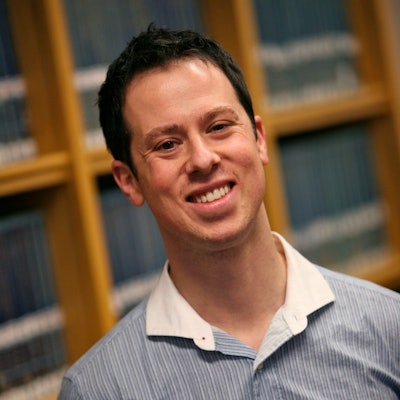Bachelor’s degrees in science, technology, engineering and math (STEM) are tough to get. But two students with similar high school preparation and interest in STEM should have similar probabilities of obtaining one, right?
Well, they don’t. They differ greatly if one is a man and one is a woman or one is white and the other is Black, Hispanic or Indigenous. In fact, even when both students survive first-semester “weed out” classes like calculus, our new study found shocking differences by gender and race. For example, a white man has a 48% chance of getting a STEM degree while a comparable Black woman has only a 28% chance. Why do we have these disparities, and more importantly, how do we change them? Dr. Nate Brown
Dr. Nate Brown
Sources of Disparity
The students in our model have comparable high school preparation, interest in STEM, and academic performance during their first semester in college, so differences in K-12 preparation or grades in intro STEM courses are unlikely to account for our findings. And blaming these disparities on race and gender is incorrect, racist and sexist. Period. We need to look elsewhere, and evidence suggests we STEM faculty should spend some time under the microscope, no matter how uncomfortable it may be.
For instance, studies show STEM faculty, like all faculty, exhibit gender and racial bias in hiring. Studies in non-STEM contexts reveal racial bias in grading; so, it seems likely that STEM faculty are also biased graders. Research has shown a STEM instructor’s belief about intelligence impacts grades. When instructors hold a growth mindset, believing intelligence grows through cognitive training and effort, then underrepresented students typically get a B in their class. When they hold a fixed mindset, believing intelligence is essentially fixed at birth, then those students typically get a B-. Neuroscience supports a growth mindset, but fixed mindsets are common in mathematics, a notorious STEM gatekeeper, and we shudder to think how much it contributes to racial and gender disparities.
There is, however, an elephant in the room: we STEM faculty are trained researchers, not trained teachers. Even those who care deeply about teaching, and there are plenty of us, have little to no training in pedagogy. So, we tend to teach the same way we were taught. Education experts have long known that antiquated methods like traditional lectures contribute to driving students out of STEM pathways. Among other things, they aren’t great at promoting student engagement or sense of belonging, which are crucial ingredients for success, particularly among minoritized students.
Making Change
STEM faculty who care about equity must learn to be better, more equitable teachers. It isn’t easy to unlearn deeply entrenched beliefs and reprogram old habits. But isn’t learning what academics do best? Moreover, there’s never been a better time to learn about learning and teaching because of the numerous great resources available. Dr. Ebony O. McGee’s book, Black, Brown, Bruised, is excellent for reflection and discussion. Drs. Kelly Hogan and Viji Sathy’s book, Inclusive Teaching, is filled with concrete suggestions. And online trainings such as the Inclusive STEM Teaching Project are accessible everywhere. Dr. Chad Topaz
Dr. Chad Topaz
But be warned: updating your pedagogy on your own is harder than doing it with a group of like-minded, committed colleagues. You can’t revamp your classroom overnight. It could take years, so working in community helps with everything from processing new information to staying motivated and accountable. Start a book club. Have lunch! Experiment with new methods, then visit each other’s classes to get feedback on the changes. Teaching is a dynamic, human interaction. Learning to teach well should be too.
We have more than enough evidence that higher education in STEM is inequitable. There is no silver bullet for mitigating this, and teaching practices surely aren’t the only thing that needs to change. But to paraphrase Maya Angelou, we STEM instructors now know better, so we must do better. Otherwise, we’re contributing to the institutional racism that acknowledges inequity -- then yawns and goes back to the lab.
Dr. Nate Brown is Professor of Mathematics at Penn State University
Dr. Chad Topaz is co-founder of Institute for the Quantitative Study of Inclusion, Diversity and Equity; Professor of Complex Systems at Williams College; and Adjunct Professor of Applied Mathematics at the University of Colorado, Boulder





















